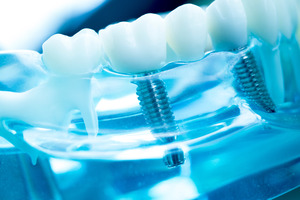
When you think of modern solutions for missing teeth, dental implants likely come to mind. But this tooth replacement option didn’t always exist in its current form; there have been quite a few advancements that have helped dental implants become what they are today. If you’re interested in learning more about the history of dental implants, here’s a brief look at how they’ve evolved over the years.
Early Dental Implants
About 4,000 years ago, people in China used carved bamboo pegs to fill in the empty spaces left by missing teeth. These are considered to be the first dental implants. Roughly 2,000 years after that, Egyptians had a similar idea, except their pegs were composed of precious metals.
Early dental implants could not be said to be as successful as modern ones. The primary issue is that they were unable to form lasting bonds with the jawbone. Between the 1500s and the 1800s, Europeans experimented with dental implants made out of a variety of materials such as gold, silver, and porcelain. However, real progress wouldn’t be made until the 1900s.
The Rise of Titanium Dental Implants
In 1952, Dr. Per-Ingvar Branemark was conducting an experiment that involved inserting a piece of titanium into the femur of a rabbit. But when he tried to remove it, he found that the titanium had become integrated with the bone around it. This ultimately led to the idea of making implant posts out of titanium.
In 1965, Dr. Branemark used a titanium dental implant to replace one of his patient’s teeth. The implant was ultimately successful. It took until 1982 for Dr. Branemark’s research to be accepted, but once it was, it didn’t take long for other dentists to start placing titanium dental implants.
It should be noted that Dr. Branemark is also responsible for the invention of zygomatic dental implants. These are longer implant posts meant to be inserted into the zygomatic bone (which makes up part of the cheek). With zygomatic implants, even individuals who have experienced extensive bone loss in their jaws can have teeth replaced from the roots up.
Dental Implants Today
Dental implants have become the modern gold standard for tooth replacement, and they boast an impressive success rate of around 95%. Modern technological advancements such as cone beam scanners help ensure that the implant posts are inserted precisely where they need to go.
If you’re currently struggling with an incomplete smile, dental implants could be just the solution you need. Reach out to your dentist today to schedule a consultation so that you can find out whether you’re a viable dental implant candidate.
About the Author
Dr. Walter Mick went to The Ohio State University School of Dentistry for his dental education. He has completed advanced study programs in implant dentistry, and he is a member of the International Congress of Oral Implantologists. His Reynoldsburg practice, Mick Family Dental Care, provides start-to-finish dental implant treatments. To schedule a consultation with Dr. Mick, visit his website or call (614) 864-4618.
